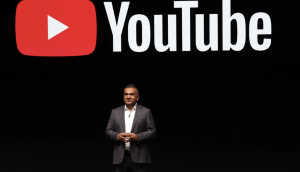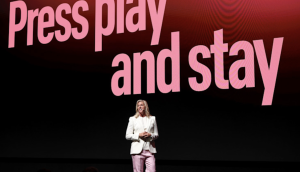As one year closes and another one begins to rev up, MiC is asking industry leaders to look back on the events that changed their business in 2014 and predict the trends that will shape it in 2015. Next up is Karine Courtemanche, president of Touché! PHD.
What 2014 event or trend had the biggest impact on your business?
Looking back on 2014 there are two trends that have had significant impact on Touché!.
Millennials: For any agency that champions digital communication platforms, the rise to prominence of the millennials as a coveted cohort, has contributed to the accelerating pace at which we need to adapt to media consumption changes. But perhaps even more importantly, millennials are reshaping the way our agency operates. We’ve almost become more fluid in the way we restructure to better meet their career growth expectations.
Digitization of retail flyers: One of the last bastions of the analogue media landscape to resist digitization, for a number of good reasons, has been the flyer insert. It’s one of the rare forms of communication that is so convincing to its proponents in its ability to drive foot traffic and sales, that most have turned a blind eye to its increasingly large negative ROI. The ability to target based on weather, location and browsing habits online with multiple ad formats can represent a reduction in millions of dollars wasted. We invested a lot of time in 2014 rethinking the flyer model with our retail clients.
What buzzword(s) should stay in 2015?
Privacy, big data, the internet of things (IoT), native advertising, brand storytelling, click-fraud, customer-centricity, content, engagement marketing, omni-channel retailing, media-agnostic, immersive design and content. And one that should stay forever: media creativity.
How has your team changed the most in the past year?
We’ve doubled in size in the last 24 months. So there are many new faces in the office every week! Adapting to the digitalization of everything has meant the creation of ever-more specialized positions. The number of media specialties integrated in our various teams has doubled (SEM, SEO, programmatic, analytic to name a few).
However, one new position that I might not have predicted just one year ago, is the creation of the hyper-local specialists department. Just as eating local has proven to be more than a passing fad, many advertisers are now adopting this philosophy in their approach to marketing. For example, I really enjoyed the Yellow Pages campaign that encouraged consumers to shop in their neighbourhood. We feel the same excitement from our clients who are seeking partners that can quickly buy large-scale national campaigns but who are also able to customize media for each market plan, as the media reality is so different from coast to coast. Of course, this level of customization for each market requires more hours from our teams, however we find the return on investment is generally better for our clients.
What are the top three things those in the Canadian media business need to be paying attention to in 2015?
1. Insight: As an industry we’ve been paying lip service to big data. I think the infrastructure is now in place to shift our attention from data to insights. The product we deliver to our clients is never about the data itself. It’s all about the insights resulting from data that shape our strategies. Consider all of the rich sources of data coming from the digital marketing initiatives (display, mobile, programmatic, search, websites, social, etc.). It wasn’t long ago that all of this data came to us in silos. Now with the strength of data management platforms, it’s aggregated and our analysts can dig with ease for those rich insights that can deliver competitive advantages.
2. Expansion of programmatic: As programmatic starts to mature as a practice, through its specialists and the technologies that support it, we may see it expand beyond the borders of online and mobile digital space. It’s expected that by 2020 the broadcast system will employ programmatic to deliver a portion of the advertising it carries. In 2015, all marketers should commit themselves to understanding the profound transformative nature of programmatic.
3. Measurement: We can see some shift in the measurement and audit systems employed by the media industry. NadBank and PMB are merging. Advertisers spend large sums of money to measure share of voice and monitor competitive activity. Yet, as an industry, we still have blind spots. Almost 25% of all ad dollars will be spent in digital media next year, which lacks a solid all-encompassing monitoring service.
What is your prediction for the trend that will shape the media business in 2015?
Out of the three presented above, I believe insight is the one trend that will shape our business in 2015. One of the presenters at Cannes this year was Keith Weed, CMO at Unilever. Keith shared with us a story that in my opinion encompasses this notion of moving from big data to big insights. Unilever managed to convert data into a customer benefit. Partnering with Google to uncover market trends months before they happened with 90% accuracy, it used the information to adapt its brand content strategies accordingly. We can call this trend pre-targeting. We are getting closer and closer to the kind of predictability portrayed in Minority Report!
In opposition to that, consumers are more and more worried about privacy issues. Google Ad block is only the tip of the iceberg. Advertisers and marketers will have to educate consumers about the basic content model: you can have it for free, but you will to trade it against your attention for ads. Or, you have all rights to ask for ad-free content, in which case you should be willing to pay for it.
























